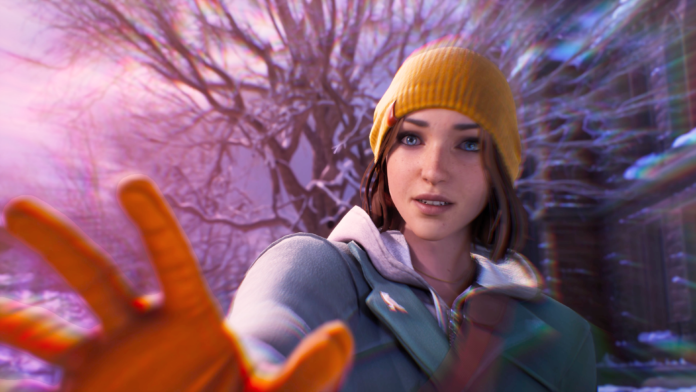I’m a recent (but enthusiastic) Life is Strange convert. My journey with the series first started with Life is Strange: True Colors and its DLC, and from there I went back to the very beginning and played the game that started it all, and got completely Why Max’s story captivated many players all those years ago.
So when it was confirmed that Life is Strange: Double Exposure would reunite us with a depowered Max Caulfield who was now in college, I was excited to be there for the launch and be drawn into Max’s next mystery.
Having had early access to the first two chapters on PlayStation 5, I’m happy to say that the game feels precisely as you would expect from a new Life is Strange game; These first two chapters form an intriguing (and emotional) new supernatural whodunnit set in and around Max’s new haunt, Caledon University, and introduce us to a new cast of interesting characters.
That said, I came away from these first two chapters a little frustrated with the actual game itself; here’s why.
What I didn’t like about Life is Strange: Double Exposure
Like I said, my biggest problem with Life is Strange: Double Exposure isn’t with the story, nor is it with the new cast of characters. It’s not even about the nagging performance issues – although I did notice the occasional environmental pop-in, a bizarre shaking character model, and some awkward transitions between cutscenes during gameplay.
No, my big problem with the game is Max’s new timeline-hopping power. Although she has lost the power to rewind time, she develops an entirely different supernatural ability after the murder of her friend Safi. Now she can move freely between two timelines: the current reality… and one in which Safi is still alive.
Mechanically, strength only really becomes an important factor in Chapter 2, “Penumbra,” and from what I’ve seen so far, I don’t think it’s implemented in super interesting ways. The added hassle of switching between the two worlds made the game feel like it was getting in the way of itself.
While I purposefully want to remain as vague as possible (to avoid spoiling the big story beats), I found the new power more frustrating than fun. I want to to learn more about Max’s colleagues, friends, and suspects, but between scenes I had to waste time wandering back and forth to the specific locations on campus where you can jump between timelines.
Often all I had to do was pick up an item or listen to a few lines of dialogue before jumping back in to continue my investigation, and sometimes you have to do this multiple times to solve that particular sequence. So much timeline jumping felt like it dragged the pace down.

Look
Of course, I know this is still early in the game, but I would much rather have this extra downtime wasn’t in the way of the story I want to see more of. Fortunately, though, there were some indications that things would be moving in the right direction towards the end of the second chapter.
Towards the end of “Penumbra” I had to jump through the timelines to avoid getting caught someone (I won’t say who, for anyone who wants to go in blind), and this is where the powers started to show potential in the puzzle department, beyond the simplest of fetch missions.
That same scene then ends with a hint that Max may have even more tricks up her sleeve as she masters her new skill. Between that – and the truly shocking ending to the chapter – I’m still curious to see what else Life is Strange: Double Exposure has in store, and where the story will go; I’ve tempered my expectations for the moment-to-moment gameplay a bit.
For now, I hope to be pleasantly surprised when the full game releases on PC, PS5, and Xbox Series X|S on Tuesday, October 29, with a Nintendo Switch port at a later date. If you can’t wait until then to play, Ultimate Edition owners will get access to the first two chapters on October 15.





